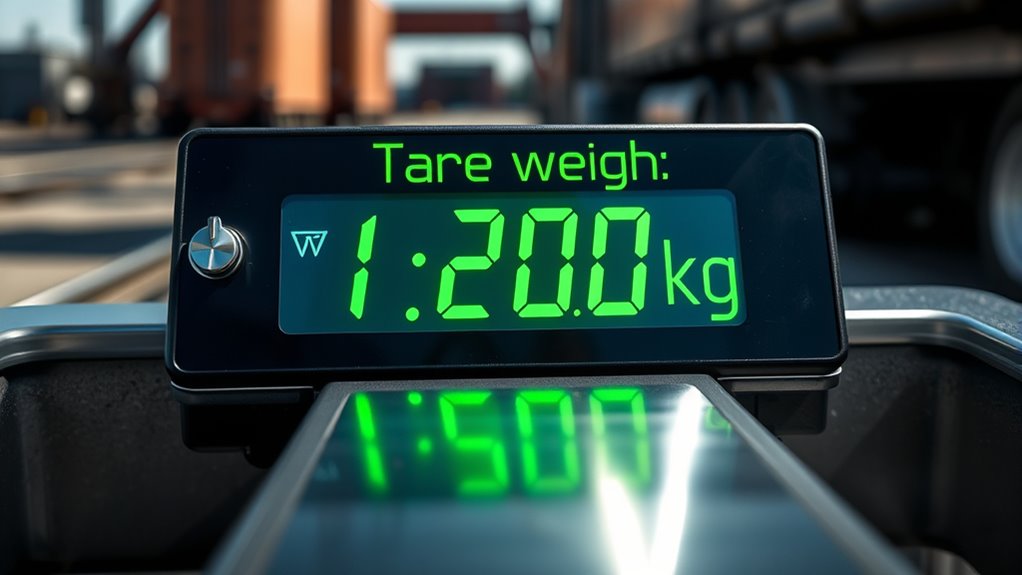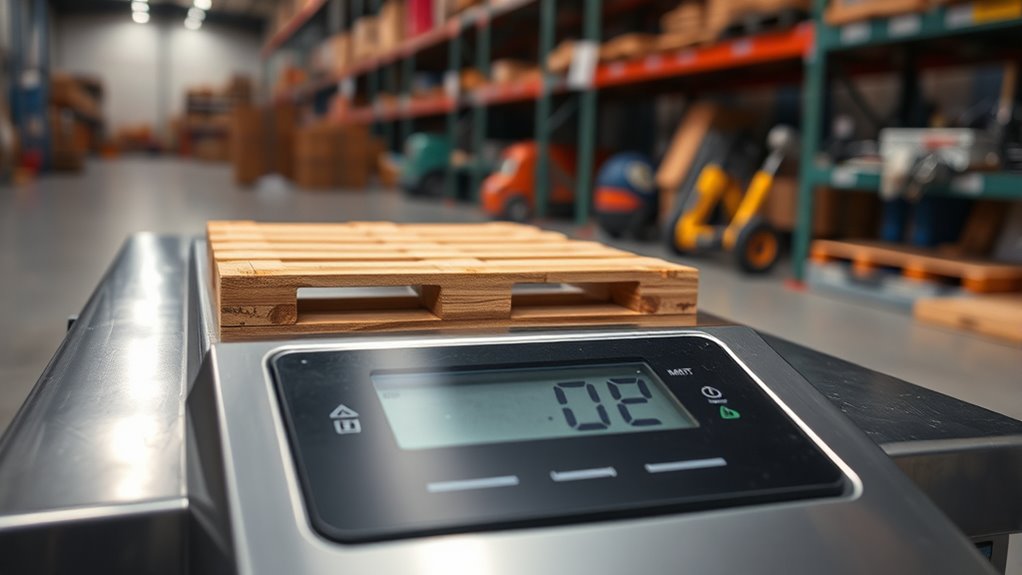Tare weight is the empty weight of a container or packaging before it’s filled with contents. Subtracting this from the total weight helps you find the actual weight of what’s inside. Knowing your tare weight is essential for accurate measurements, preventing overcharges, and ensuring compliance with weight regulations. It’s especially vital in shipping and retail operations. Keep going to discover more about how tare weight impacts measurements and regulations.
Key Takeaways
- Tare weight is the weight of an empty container or packaging without its contents.
- It is used to determine the net weight of the actual product.
- Knowing tare weight helps ensure accurate measurements in shipping and sales.
- It assists in compliance with legal weight regulations and prevents overcharging.
- Tare weight is essential for proper load management and measurement accuracy.

Have you ever wondered what tare weight means and why it matters? Tare weight is the weight of an empty container or packaging before any contents are added. Understanding tare weight is essential because it helps you determine the actual weight of the goods you’re handling, which is especially important for accurate measurements and compliance with regulations. Whether you’re shipping, selling, or weighing items, knowing the tare weight ensures you’re not overcharging or underreporting, making it a critical aspect of proper load management. Accurate measurement relies heavily on proper calibration, which involves checking and adjusting your weighing scale to ensure its readings are precise. Calibration helps maintain measurement accuracy and ensures that your scales meet legal weight regulations, which often specify how precise weighing devices need to be for commercial transactions. These regulations exist to protect consumers and ensure fair trade practices. By adhering to legal weight regulations, you demonstrate that your measurements are trustworthy and compliant with industry standards, avoiding potential fines or legal issues. Knowing the tare weight also becomes crucial when you’re dealing with legal weight regulations. These regulations set the maximum and minimum limits for weights used in commerce, transportation, and other industries. For example, in freight shipping, the total weight includes both the cargo and the tare weight of the container. Accurate tare weight measurement ensures that the gross weight doesn’t exceed legal limits, helping you avoid penalties or delays. It also ensures transparency when weighing items for sale or distribution, so customers receive the correct quantity and price. Furthermore, understanding tare weight helps streamline various processes. When loading or unloading goods, knowing the container’s tare weight allows you to quickly calculate the net weight of the contents without needing to weigh everything separately. This efficiency saves time and reduces errors, especially in high-volume operations where speed and precision are critical. It also helps maintain consistency in your records and reporting, which is vital for audits and regulatory inspections, especially considering the importance of credit scores and other financial metrics in overall financial health.
Frequently Asked Questions
How Is Tare Weight Different From Gross Weight?
Tare weight is the tare measurement, or the weight of the empty container or vehicle, which you subtract during net calculation. Gross weight includes everything—your goods plus the container or vehicle. To find the net weight, you subtract the tare weight from the gross weight. This way, you accurately determine the weight of the actual goods without the container, ensuring correct measurements for shipping, selling, or record-keeping.
Why Is Tare Weight Important in Shipping?
You need tare weight for accurate tare calculation and proper container calibration, guaranteeing your shipments meet legal and safety standards. By knowing the container’s tare weight, you can subtract it from the gross weight, revealing the true cargo weight. This process helps prevent overloading, ensures compliance, and avoids penalties. Tare weight acts as the foundation for precise weight measurement, guiding your shipping decisions and maintaining operational integrity every step of the way.
How Do You Accurately Measure Tare Weight?
You accurately measure tare weight by first ensuring your scale is properly calibrated for precise readings. Place an empty container on the scale and record its weight, making sure it’s stable. This is the container tare weight. Always double-check calibration and use consistent containers to maintain accuracy. Proper calibration and careful measurement help you determine the true weight of contents without the container’s weight influencing your results.
Can Tare Weight Vary Between Different Scales?
Yes, tare weight can vary between different scales because of differences in calibration standards and scale accuracy. If a scale isn’t properly calibrated, it may give inconsistent tare weights. To guarantee reliable measurements, you should regularly check and calibrate your scale according to manufacturer guidelines and calibration standards. This helps maintain accuracy across various scales, reducing discrepancies caused by variations in tare weight readings.
Is Tare Weight Used in Other Industries Besides Transportation?
Yes, tare weight is used in many industries beyond transportation. You’ll find it in packaging, where container weight helps determine the net weight of products, and in manufacturing, to account for container weight when measuring raw materials. By subtracting the tare weight, you guarantee accurate measurements of the actual product, whether it’s in shipping, storage, or quality control processes. This consistency helps maintain fairness and precision across various sectors.
Conclusion
Understanding tare weight is like holding the blueprint of a vehicle’s hidden skeleton. It’s the silent guardian, quietly revealing the true weight beneath the surface. When you grasp this concept, you hold the key to unraveling accuracy in weighing and transportation. Without it, you’re sailing blind in a sea of numbers. So, remember, tare weight isn’t just a number—it’s the anchor that keeps your weighing ship steady amidst the shifting tides.









